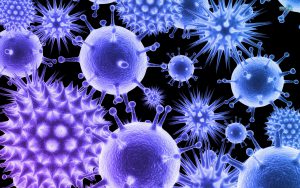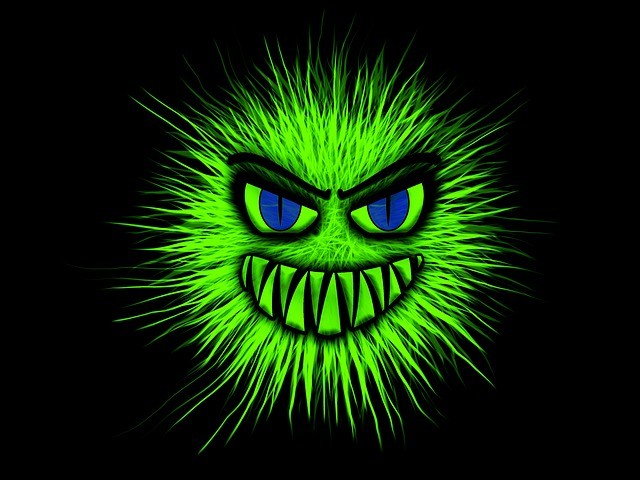How Do You Get Shingles
Several years ago when I first heard the term shingles I was like “what the heck is shingles”? I then saw a few commercials with Terry Bradshaw giving his eloquent overview of it and that didn’t help my confusion. As a matter of fact, it may have made me more confused. Since then I’ve done further research into the subject and know a lot more. Not only do I know about shingles in general, I know the answer to how do you get shingles. Let’s take a look at what shingles is, how you get it, and what you can do about it.
What Is Shingles
 First off, who gave it the name “shingles”? That’s quite the odd name. While it’s difficult to find out who actually gave it the name “shingles” it is interesting to note what it means in a few languages. In Spanish it means “small snake”. In Hindi it means “big rash”, in Arabic it means “belt of fire” and best of all in Norwegian it means “hell’s fire”.
First off, who gave it the name “shingles”? That’s quite the odd name. While it’s difficult to find out who actually gave it the name “shingles” it is interesting to note what it means in a few languages. In Spanish it means “small snake”. In Hindi it means “big rash”, in Arabic it means “belt of fire” and best of all in Norwegian it means “hell’s fire”.
Shingles is also known as herpes zoster. It is a viral disease that is primarily characterized by a painful skin rash with blisters in a localized area on the body. Typically a few days before the rash appears the body area that will be affected will start to tingle or become painful. People describe the initial feeling in a variety of ways but the common theme is it feels tingly, sensitive to the touch, and beginning to burn.
After a few days the rash will then appear on either the left or right side of the body or face where the tingling began and last for 2-4 weeks. Some people will also suffer from nerve pain which can last for months or years after the rash is gone. Other than the rash the only other symptoms of note that sometimes appear are a fever, headache, or tiredness. Shingles can appear in children but it is more common with folks 50+.
Shingles has been around since ancient times. It is estimated that one-third of people will develop shingles at some point in their lives. If you are over 60 it is recommended to get the shingles virus.
How Do You Get Shingles
This is where it gets really interesting. The varicella zoster virus is what causes shingles. It is a double stranded DNA virus that is related to herpes simplex. Most people get exposed to this virus when they are kids. What it gets manifested into as a kid is chickenpox. This is why most people think if you’ve had chickenpox as a kid you’ve got a good chance of getting shingles as an adult.  While this is true there is more to the story.
While this is true there is more to the story.
Again, most of us are exposed to the varicella zoster virus when we are kids. For many of us, myself included, this presents as chickenpox. So you get those little 300+ little itchy scabs all over your body and writhe in itchy agony for a week until they start to go away. Plus you have to be quarantined for as long as you have it because it’s super contagious.
Once you get over the chickenpox as a kid the virus goes dormant inside you but never really leaves your body. So when someone gets shingles what has happened is the virus has been reactivated by something. It’s not easy to tell what reactivates it. Could be getting older or some other reason, it’s not well understood what causes the dormant virus to awaken. When it gets reactivated it travels down nerve endings to the skin where the rash forms and then later, the blisters.
If you’ve never had chickenpox but were exposed to the vericella zoster virus when you are older you will get chickenpox, not shingles, as an adult. The virus has stayed dormant (even though it never presented as chickenpox when you were a kid) and something reactivated it. As a result you get chickenpox and not shingles because it’s the first time it shows itself on the outside of your body. Now you know how do you get shingles!
What You Might Think It Is
Since the shingles condition starts with the tingling burning sensation many people think they have a bug bite. I’ve seen people describe it as they feel like they may have gotten into something they are allergic to. Might be poison ivy, could be poison oak, etc. It’s very common to jump to either conclusion since the symptoms are so similar.
Once the rash starts it’s very common for someone to think they are having an allergic reaction. Once the bumps start to appear many people think it’s eczema or psoriasis. They do look very similar if you are unfamiliar with how shingles look.
The shingles rash starts as tiny raised bumps. The other big tell tale sign is that shingles is usually in a pattern. This is often times referred to as the “shingles belt” because it’s like a strip. Eczema or a rash can develop anywhere on your body. The shingles rash is usually on either the side of your body, belly, or neck and face. Shingles clears up after a few weeks, eczema or psoriasis often takes longer to deal with.
If you feel like it’s even a possibility that you have shingles the best course of action is to get see your doctor. He or she can get things figured out for you quickly and if possible, issue a treatment.
How To Treat Shingles
 Now for some unfun news. As of right now there is no known cure for shingles. The good news is there are some treatments to reduce severity and symptoms.
Now for some unfun news. As of right now there is no known cure for shingles. The good news is there are some treatments to reduce severity and symptoms.
There is some medication your doctor can give you to help with the shingles. The medicine helps speed up the recovery time of having shingles. The trick is they are most effective if you start to take them within 72 hours of first getting the rash. After the 72 hour window they can still help but it’s not as effective. The medication stops the virus from spreading as well.
There are topical creams you can get to apply to the rash that helps. And if the pain is severe enough sometimes you can get something to lessen the pain as well. People have temporary relief of sorts by applying a cold washcloth to the rash.
While the blisters in the rash are “leaky” (ehhhh, I know) keep them covered up. It’s a pain for sure but it’s the right thing to do.
If you are over 60 it is recommended you get one of two vaccines to help prevent and/or lessen the severity of shingles. They are Zostavax which was approved in 2006 and Shingrix which was approved in 2017.
Put A Band Aid on It
Hopefully I’ve answered the question how do you get shingles. It has a strange name but as mentioned, one-third of us will get it in our lifetime. Now that you know a little more (otherwise why would you have read this) you know what to look out for.
If you begin to develop the tingling or burning on your skin, stay on top of the feeling. When the rash begins, pay extra close attention to it. When those little bump like blisters appear, get thee to a doctor….STAT!
In good health,
Mat A.


Hello, Thank you for sharing about this condition. I have saw commercials about shingles, but I had no idea what it is. Now, thanks to you, I know what shingle is and that it is related to chickenpox.
I had chickenpox when I was a kid, and if now I get vaccinated, will I still get shingles when I am in my 50s?
Also, are shingles contagious?
Thank you!
Hey Kai,
Thanks for stopping by. You could still get shingles even if you’ve been vaccinated but you definitely reduce the risk by as much as 51%. Good news! And shingles are not contagious but chicken pox sure are!
Hey Mat,
I had chickenpox as a kid and when I was in my mid-twenties I got the shingles. It was really weird how it attacked only the left half of my body and mainly along my abdomen. It was slightly itchy and burning sensation. It lasted for me about 2 weeks while turning into leaky blisters, kinda gross.
I thought I might be getting it again so that is how I came across your page. I’m pretty sure now that it is just poison oak since we have a lot in California where I hike around. Also it hasn’t spread much over past several days like the shingles did originally.
One thing I would recommend is using lukewarm water when you bathe to not further irritate it from hotter water. And like you said having a damp cool cloth to put on it will help ease the burning pain of it.
Thanks, Shaun
Hi Shaun,
That’s young to get shingles but it does happen. I’ve never had shingles (knock on wood) but have had chickenpox. Hopefully I’ll never get shingles but it’s not the worse thing in the world. The whole localized deal where it only shows up on part of your body is wild.
Thanks for the lukewarm water tip, that’s great to know. Cheers.